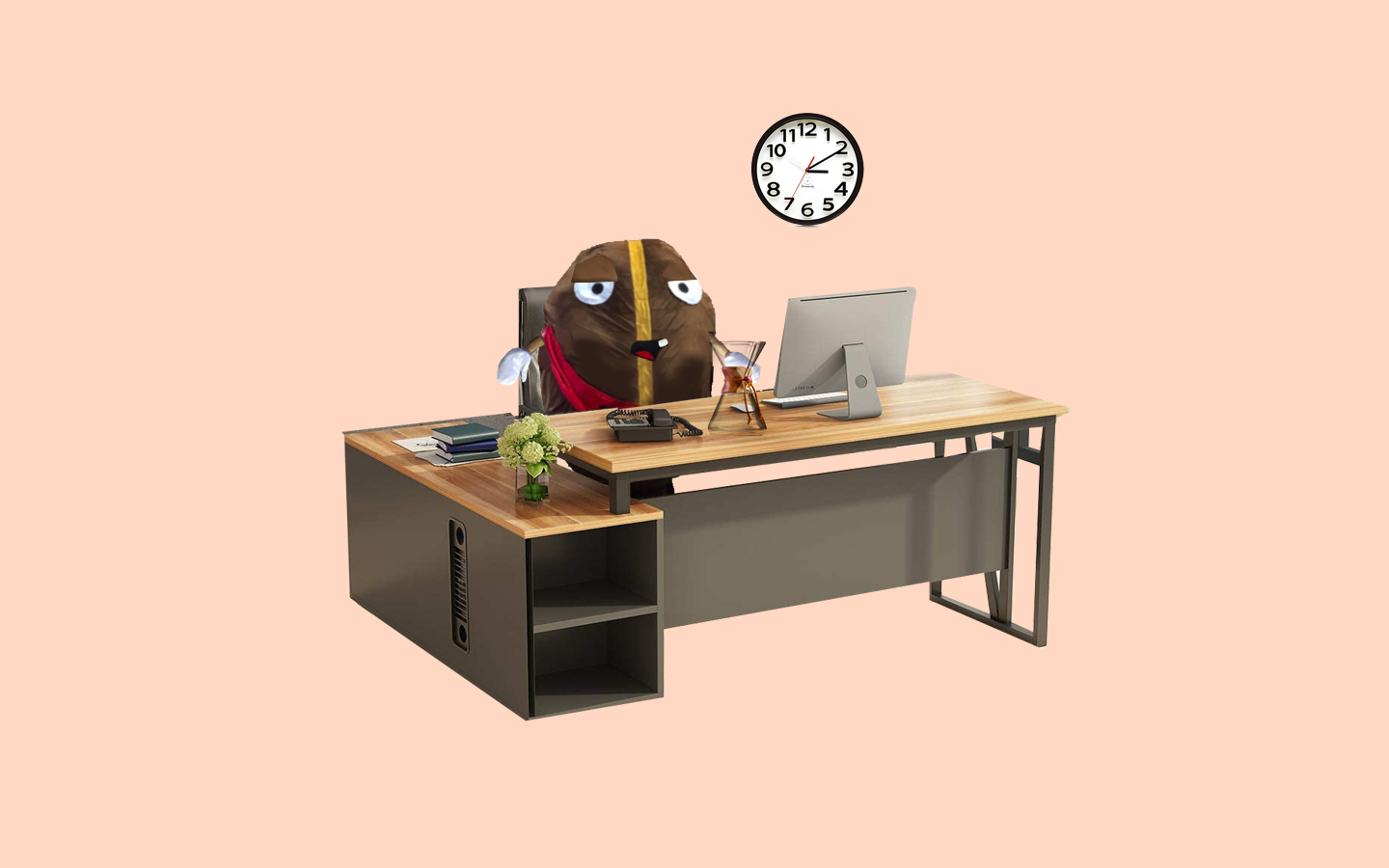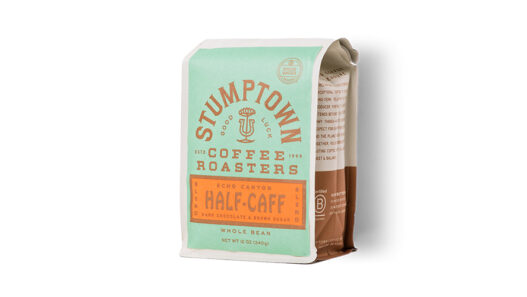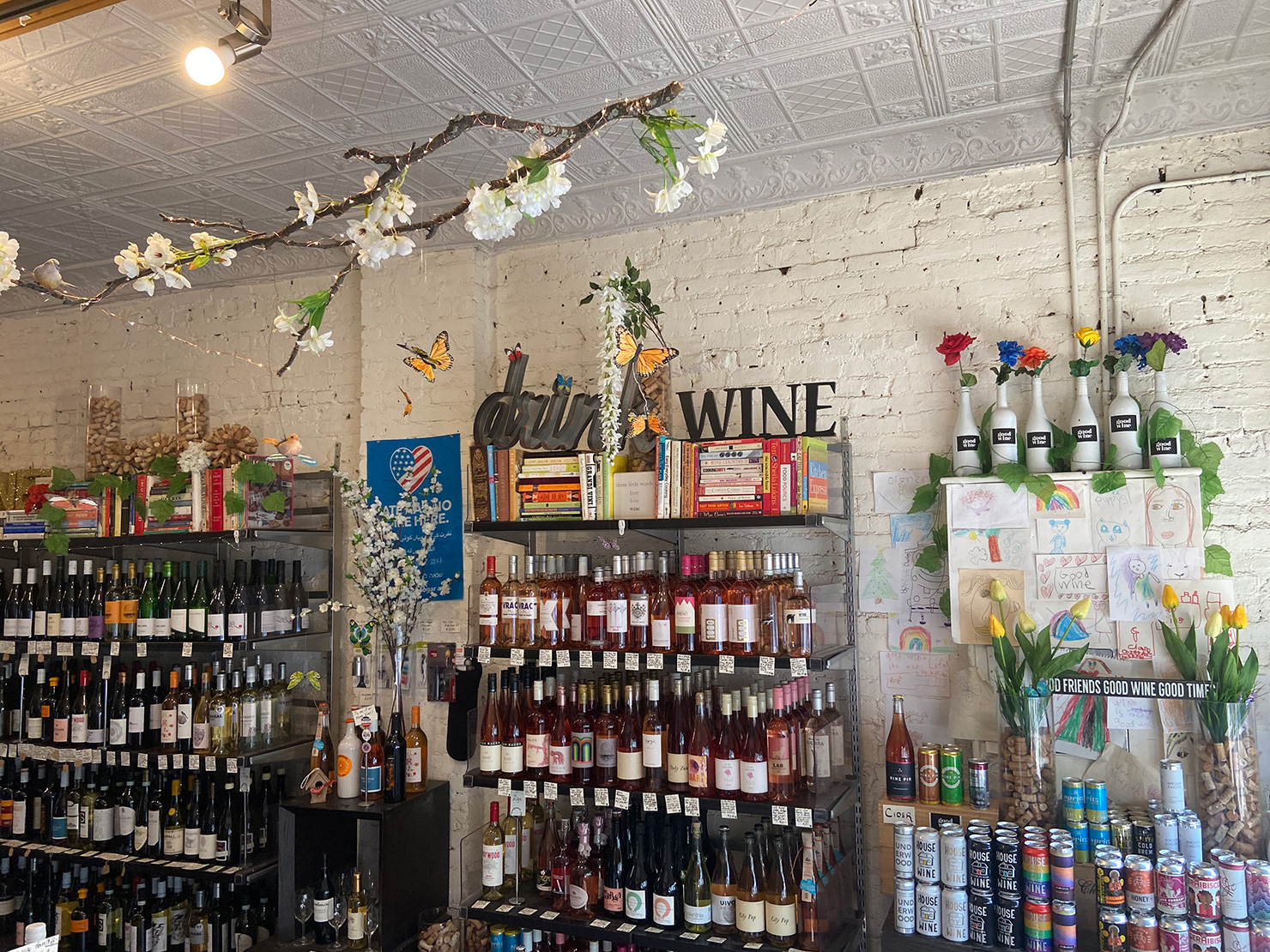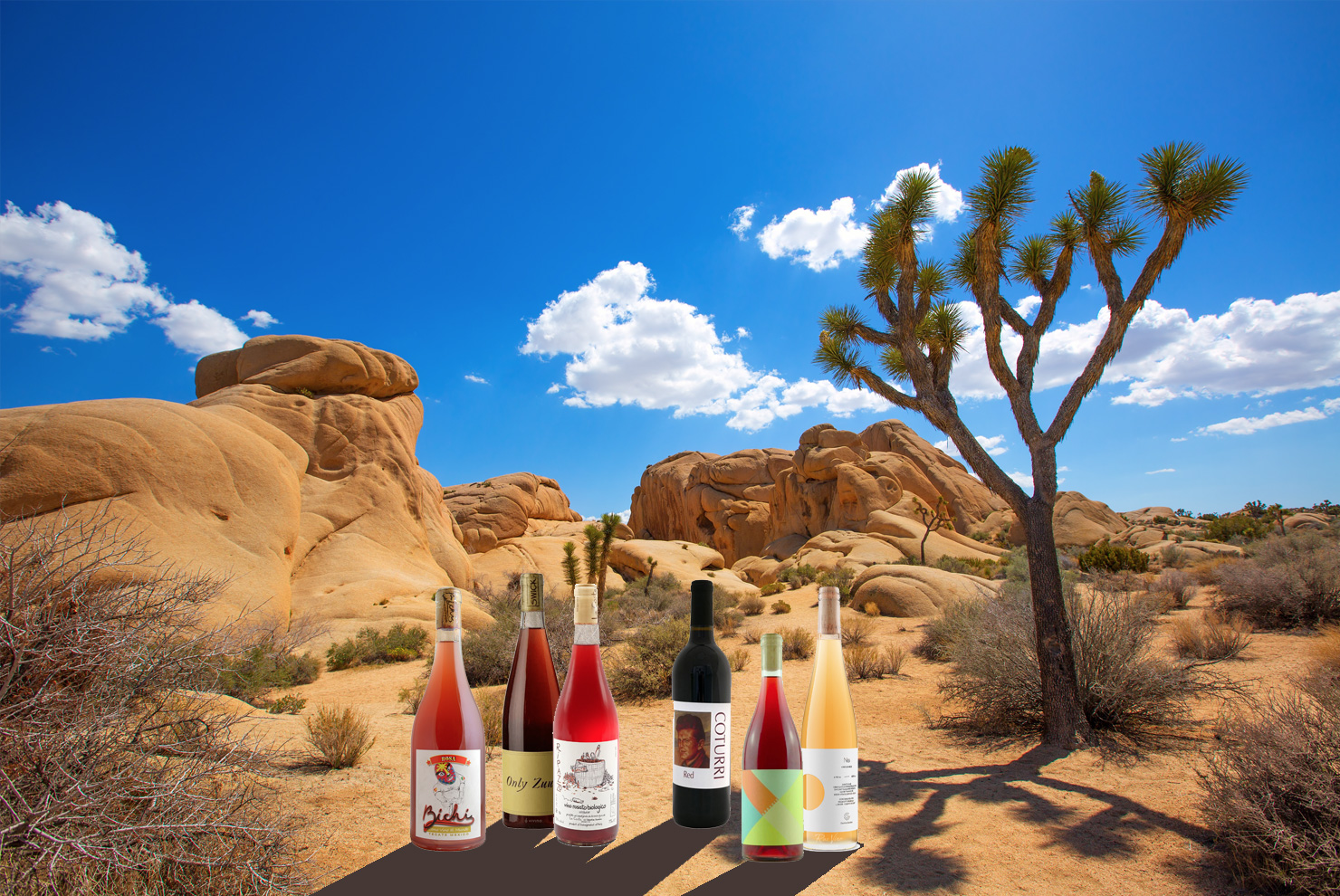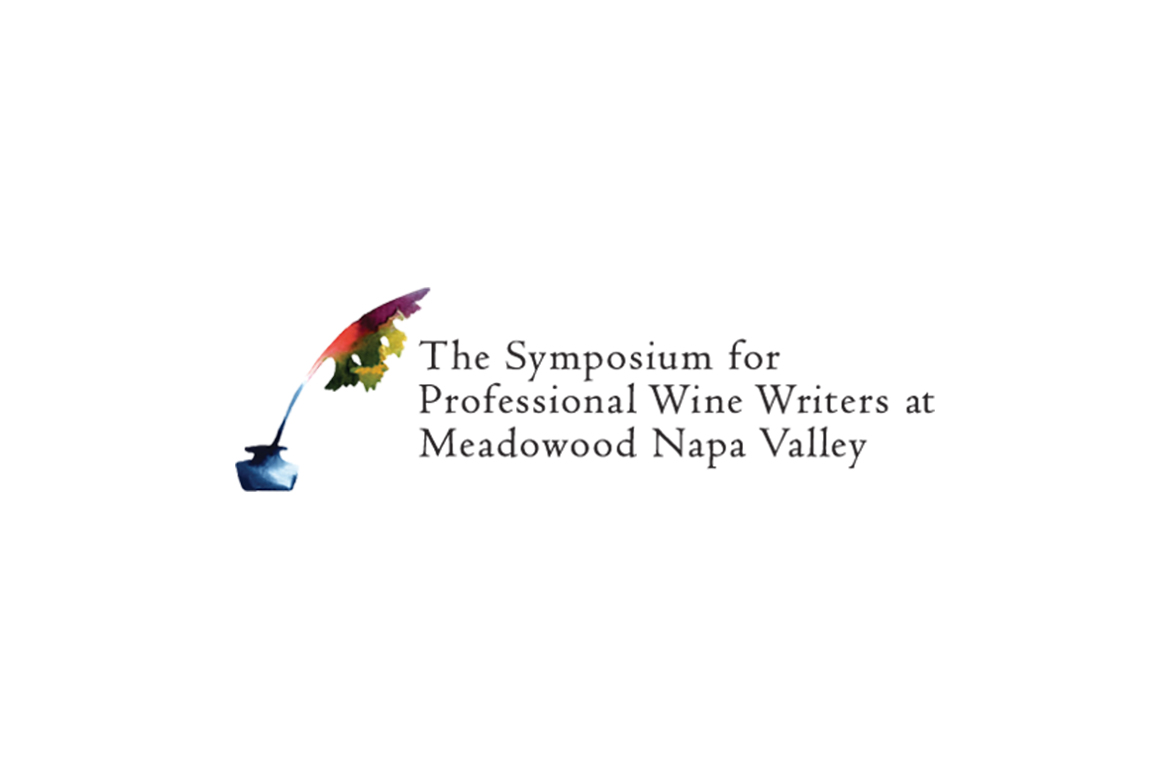Once a Philosophy Professor at St. John’s University, these days Abe Schoener is a modern philosopher of California wine. Schoener took a sabbatical from academia in 1998 to study grape growing, and 20 years later he’s still in the cellar. Through his winemaking label Scholium Project, he works tirelessly with assistant winemaker Alex Pitts and a retinue of wine trainees—think of them as graduate students—to guide specific vineyard sites from across California optimum expression in the bottle.
This is very much Schoener’s goal: to identify the character of the fruit, to find an expression of its terroir, and to ultimately enable that fruit in portraying its own true character. The end result is undeniable, drawing accolades from natural and conventional wine crowds alike, in a spirit perhaps best captured by Eric Asimov of The New York Times.
Schoener and his team have become particularly well-known for his experimentation. This was especially true in the Project’s early days, when Schoener and a likeminded corps of “New California” winemakers helped push the definition of what modern wine from California could be. Unique, daring, bold—wines with skin contact, extended aging, and little to no S02. Today these wines are part of a worldwide vanguard for natural winemaking, but in Northern California in 2005? This was closer to the cult of Pythagoras than cult Cab.
Today Schoener’s wines continue to challenge and explore how we express grapes, and examining his wines and his techniques make us stop and question: what is a grape variety? What is terroir? What is the winemaker’s hand able to do in order to best further what Nature has already given us in the vineyard? What does it all mean?
In addition to Scholium, Schoener also vinifies New York State wines in the Red Hook Winery with Mark Snyder in Brooklyn. Further to this, there are exciting new plans on the horizon to build a winery in Los Angeles, on land that was a vineyard nearly 100 years ago. These LA plans aren’t quite press-ready yet, but watch this space.
I spoke with Abe Schoener digitally from London.
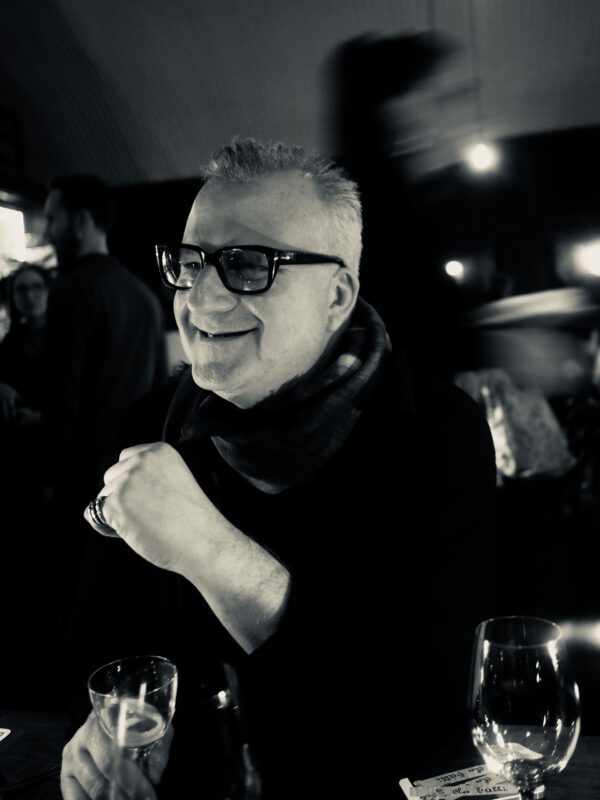
This interview has been edited and condensed for clarity.
Hello Abe Schoener, and thanks for speaking with me. By way of introduction, your story has become legend now: from professor of philosophy to philosopher winemaker. What can you tell me about this transition time?
I made the transition because my school offered me a sabbatical, which is quite typical in teaching. My ex-wife and I wanted to take advantage of this and to go somewhere totally different to where we lived at the time, with the possibility of starting a new life somewhere else. We debated a little about where to go, eventually settling on Northern California (with no connection to grape growing). I tried to figure out what I was going to do there. I was going to do academic research, to work in a library. However, I just couldn’t get that excited about it. I wanted to do something more practical, I wanted to be outside if I could… So my ex-wife, she suggested that I combine my interest in wine and my academic interests in what you could call the philosophy of plant physiology, one of the things I had been studying to a high degree, to study grape growing.
I had a friend who had been a student at St. John’s, graduating the year before, who went to work at a winery in Napa. I reached out to him and asked him if he thought he could find me an internship. He did and so in the fall of 1998, I started an internship at Stag’s Leap Wine Cellars. It was really entry level—the two things I did was monitoring grape ripening and I monitored fermentations in the winery. That was my introduction to everything. I knew about wine, but I knew so little about winemaking and grape growing. I didn’t even know how many harvests there were a year—I had no idea that there was only one harvest in the fall.
That was how it all began—a certain interest in plant physiology and an internship.
How did that lead you to Kongsgaard?
The community in Napa is pretty small. John [Kongsgaard] heard pretty quickly that a college professor from St. John’s College was working in Napa. His kids were interested in going to St. John’s, so he was really excited about the prospect of someone from the school being in the valley. He put the word out that he wanted to meet me, so that’s how we met. I eventually got invited to his house, and I guess you could say we fell in love with each other. We were almost inseparable from the first time we met.
That was in 1998; my internship at Stag’s Leap was over probably around Thanksgiving. John had a bunch of interns working for him at Luna Vineyards—many were from Europe—and I remember around Christmas time all of his interns had gone home and he had some work to do in the winery, so he asked if I would come and help him. I was amazed and delighted. I went to Luna in December, we spent two days working together and that was the beginning of working with him. As I was interested in grape growing, I asked to do an internship with him the next year, in 1999, focussing on his work in the vineyards, which meant doing something similar to my work at Stag’s Leap—being involved in monitoring harvesting conditions. I knew that I wouldn’t learn that much about grape growing, but I knew that going around vineyards with John would be really educational. By this point, in ’99, I had some friends involved more in grape growing, so I figured I’d be able to put together a series of events to help me learn more. At this point it was still for speculative and theoretical reasons, I had no intention of ever spending the rest of my life growing grapes or making wine… it was really for the sake of education.
A week or two before harvest started in ’99, one of John’s main cellar interns from Italy had cancelled and wouldn’t show up, so John shifted me from the vineyard into the winery. That’s how I got involved in winery work.

How did you get from there to the creation of the Scholium Project?
So I worked with John and the team at Luna in ’99, and it was absolutely wonderful, maybe the most wonderful thing I have ever done. The work was so intense and I learnt so much. During that time, I decided that I was going to spend at least another year continuing my education in Napa. Also during that time, my ex-wife and I broke up. My life began anew. It was very hard making that transition, moving out, moving to Napa, starting a new job. It was all very difficult but there was something that made it easier to imagine a new life because my old life had fallen apart drastically. As plans developed it made it possible to think about not going back to St. John’s, and not returning to teaching…
And so, in 2000, I had another internship with John, but this time not in the cellar, instead in the vineyards. He had stepped back from winemaking at Luna and was passing the baton onto another winemaker. Luna wanted me to help with that transition with the vineyards in particular, so I had a job where I was helping them to monitor the vineyards. It was during that harvest when John said, “Hey. I think you’re going to be really good at this. I think you should do what I do.” Then I really started thinking about it.
In 2001, I sent St. John’s a letter. I thanked them for everything that they had done and they had offered me, and I resigned.
How Scholium was born, well… In ’99, I had made a very small amount of wine from only red grapes that I purchased from Luna, from fruit that they had purchased. It was just a little bit more than half a ton. The idea was to get enough fruit to be able to make two barrels of wine. In 2000, I wanted to expand what I was doing to something more similar to what Kongsgaard was doing, namely Chardonnay. He was eager to help me—he had access to a new vineyard that he wanted to check out for his wine label. He wanted to buy six tons of fruit from the vineyard and wanted me to make all of the wine. If all went well, he would buy half and blend it into Kongsgaard and I would take half and I would make my first commercial wine with it.
So that was the first Scholium wine. It was called Les Tenebres. That was a 2000 wine, and I followed John’s protocol, knowing it would take two years to age before bottling, so we harvested relatively late in 2000, perhaps as late as early October. We bottled the wine in July 2002.
What can you tell me more about this wine?
The vineyard was in Jamieson Canyon. It’s called Los Olivos and is one of the older Chardonnay vineyards in Napa (maybe planted in the 70s?), owned by the Maldonados. What John didn’t tell me is that the whole experience was essentially like an extended job interview. The Maldonados wanted someone to make wine from their vineyard. They had already worked with John for years selling him fruit, and what they wanted to do was pull away, sell less of their fruit and make more of their own wine. Thus, I was essentially being interviewed to be the winemaker for the project. It was revealed to me in 2001 that that’s what was going on, and so the first wine I made for them was 2002. We worked together until 2008.
I didn’t make my own wine from that vineyard again until 2007; I simply took charge of their winemaking. Then another winemaker took over, for which one of the main reasons was that I was spending more and more time on Scholium, and I wanted to devote myself to it.
And from there you naturally expanded your line of wines?
If I recall correctly, in the same year I went out and found a red vineyard. The guy who told me about the red vineyard was the guy from Luna who succeeded John. It was east of Napa, but still close, probably just a 15- or 20-minute drive. It was in a region, that although very close, none of us knew about at the time: Suisun Valley. The guy that owned the vineyard was Harry Misthos—a Greek American who grew up in the grocery business and who retired to this little farm. He planted what he thought was Syrah in a backyard vineyard, perhaps of two acres, and it turned out from genetic testing that it was actually Grenache. I had thought I was making Syrah, and the wine was practically pink… it didn’t make any sense at all! So after two or three years of working with him and not understanding what was going on, we finally got the vines tested and found out.
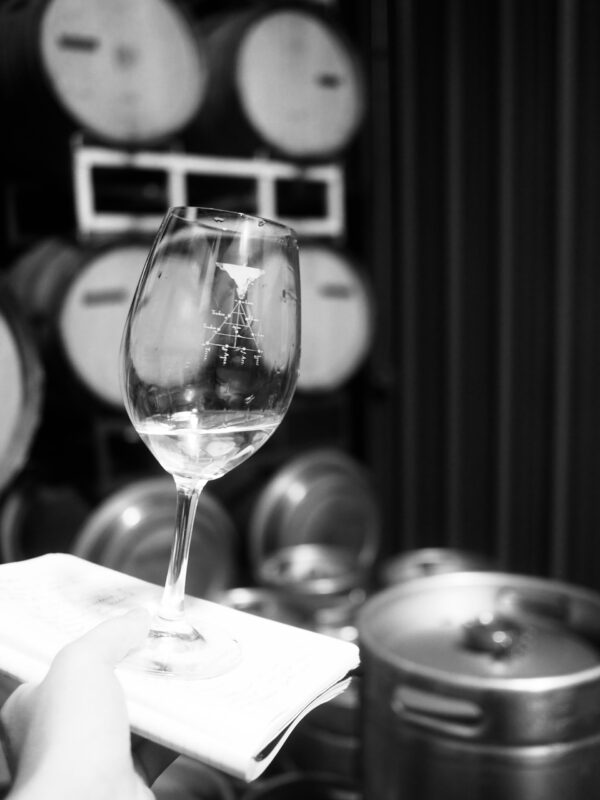
Has your approach always been along the lines of minimal intervention?
That’s what John taught me. John was already working in a way that was different to how anyone else in Napa was working. Nobody was using any terms like “natural winemaking” or anything like that. We were using terms perhaps like low SO2 and low intervention, but nonetheless it wasn’t well defined. Even to say low SO2—you could say that to somebody working in the profession and they could have no idea what you mean—it really wasn’t part of the discussion.
So even though John was doing it, he was either completely alone, or nearly alone, that it wasn’t something that we talked about. Nobody sat around and said, “Should we use SO2 or not?” It was only a question of how much. There were simply no questions then.
The same was true of various other things, for instance when making Chardonnay in Napa it was at that stage completely accepted that it would be 100% whole cluster, no skin contact, no skin contact in the press—you’d press as quickly as possible, you’d settle the juice so that no solids were in the juice, you’d use nutrients so that the yeasts were happy, you’d use commercial yeasts so that you would have a successful fermentation, you’d use SO2 from the beginning. There were some questions about how much lees stirring but everybody took it for granted that you did some, there were some questions about how often to top up, but everybody topped. There really was only a single way to make Chardonnay.
What John Kongsgaard was doing, that nobody else was doing, was using much less SO2 at every stage of the winemaking. He was doing 100% whole cluster pressing without skin contact, settling in a normal way but perhaps less than many people would—going for less clarity at the beginning of fermentation. He never used enzymes to clarify or to transfer juice. Fermentation would take place without inoculation, with no additions of SO2, and then he would top the barrels and pretty much walk away from them for months. We would not top again from when fermentation had finished (start of November) until January. He typically wouldn’t adjust the SO2 during this period at all until bottling.
This was my introduction to his kind of winemaking. While working there I was also working on the Luna wines, which were made more conventionally, so I got to see both sides at the same time. My reaction to what John was doing was, “Ok. So he’s taken things pretty far away from what is standard. What if he took them even further away?”
Do you feel this questioning perspective was driven by your background in philosophy?
It was simply an experimental question, I didn’t have a political or philosophical view, it was just for the sake of seeing what happens. Right away I experimented with no SO2, and I would say not in the first year, but maybe in the second year I was so busy that I didn’t even top every three to four months—I think at one point I let the barrels go for six months without even realising how long it had been. The wine was totally fine.
A good friend of mine from White Rock Vineyards, Christopher, had worked under John maybe five years before I did, a very well-educated winemaker. He said to me, “Your experiments are really interesting but you need to know that you can’t really do this with the fruit you’re working with, you need really high-quality fruit.”
That’s one of the things that allows me to make these decisions and for them to be successful. I think the wine was made from fruit of such excellent character that you didn’t need to be afraid of protecting it from oxidation; instead oxidation could be part of the maturation of the wine for it to turn into a good wine.
What are your own thoughts on sulphur use, and on the terminology of natural wine?
The first time I even ran into it as a philosophical question or debate was in a series of books that meant a lot to me at the time, between ’99 and ’01. They were Real Wine and The Wild Bunch by Patrick Matthews. Real Wine was the first book that presented to me that there was something like two schools of winemaking. Even though I had lived and worked in that, and was surrounded by both schools, I just didn’t grasp that in the wine world it was a subject of debate and of controversy. This was the first time that it became clear to me that there was something like a movement, and that you could become part of it, and also that there was controversy—and that you could be on one side of the controversy or on the other.
I felt like I knew for sure from what I was doing in Napa and from where I ended up that I was more interested in winemaking that was adventurous and not protective. I still don’t know whether I thought of it as natural or as anything else, but one of the things that I know that I like for instance is the spontaneity of fermentation, that you can just crush the grapes and walk away. That’s amazing. You can go away and come back in a few days and there’s a fermentation going on, the whole world smells differently and you have a transformation taking place. There’s something that appeals to me about that transformation not being in my hands; that you’re just a witness to it, you’re not the cause of it. You’re only the cause in so far as you have carefully brought the grapes in from the vineyard and in some controlled way, you’ve released the juice from them. At that point you then back off.
So I know that appealed to me and I know that I liked and admired the wines that I was making and the wines that John was making, and I think it’s fair to say that I came to not admire the wines that I was tasting in Napa that seemed too much to be made out of caution rather than out of something like adventurousness.
John’s son Alex, who I’ve always been really close to, he put it this way a few years ago… he said that there is a moral side of winemaking, and that he thinks it’s important to him and to others in our group that we do things that are courageous.
As for “natural wine,” I don’t even know when I first encountered the term but I’m guessing it was in connection with Alice Feiring. I met her at just about the same time that I started reading about her and reading what she wrote. From the beginning it was very controversial; a lot of people in Napa felt under attack by her. All of us worked in ways that she didn’t approve of, and argued passionately—and argued well—against these ideas.
I remember that she reached out to me as she was coming to Napa and wanted to speak to me. One of the reasons that she did this is that she slightly misunderstood the way in which I was making wine. She thought that I was going to be in her camp. She came to my house for a tasting—lots of friends came—and I remember that she was astounded right away because not all of the wines were made in the way in which she wanted them to be made. I think that was very confusing for her because my interpretation of her experience in the winemaking world was that there was a black and white division, almost like a religious war. I don’t think that she had met anyone who thought that these two methods of wine—these two methods that she thought were antithetical—that both of them could be ok.
So I showed her wines made with SO2 where we blocked malolactic, and I showed her wines made with skin contact with no SO2, I showed her red wines that were made with temperature manipulation, and she was kind of shocked by the whole thing. It was around then that I first had the sense, not just that there could be controversy in questions about SO2, but that it was now divided into almost different worlds that had special vocabularies.

What about your views now on winemaking and SO2?
I think this is really important for all of us. I think that we are still in a period of dogmatism and division and opposition, and I think that that is a natural part of any intellectual history, and I think that is very much what is going on now. There is a different kind of thinking and winemaking going on now than what was taking place in the ’50s to ’70s. I think the thought back then was very technical, there were a lot of technical problems that had to be overcome—people were devoting their thinking to overcoming them, to making better wines, to making less flawed wines, to making wines that didn’t spoil—and these were good things.
My sense is that in the ’90s, more and more aesthetic questions were coming into play, and the way in which people were answering these aesthetic questions in various parts of the world associated with “New World Winemaking”—people were answering these questions in a slightly narrow way. The kind of winemaking that was both technical and aesthetic spread around the world. Northern California, Chile, Argentina to some degree, Australia… here were pockets of Europe that were not affected because they had centuries-old traditions—people who were not learning these traditions at school but instead at home with generations behind them.
I think that what is really interesting now is that we are at a point in this intellectual history where things are very different—all kinds of people who previously might not have got involved in winemaking, people like me, but also people with very different backgrounds. Many of us are going into winemaking without technical education, with a sense that the aesthetic landscape can be filled in the way that we want. I think that one of the things that has happened in this moment of radical newness is a lot of what has motivated both technical and aesthetic decisions, has been the rejection of a previous model. I think that a lot of what has driven the early stages of natural winemaking, has been reactive or rejective, rather than forward thinking.
How would you define this period we’re in right now?
I feel like we are now in a period where it is less about rejection, more about leaping forwards, and one of the things that is happening at the same time is that more and more people are being less dogmatic. That makes it—for me—more common to run into people that instead of having picked one side of what looks like this religious division are moving somewhere down the middle—some wines with some SO2, some with no SO2. I don’t think I know anyone that works the way that I do, but I know there are people out there—I just haven’t met them yet.
Alex (my assistant winemaker) and I still make one or two wines a year where SO2 plays a really strong role, because we are trying to block malolactic fermentation, when we are working with relatively high pH fruit. We don’t inoculate anything in the winery, we don’t sanitize anything, and we clean everything with cold water. Thus, what we have done inadvertently is that we have bred this super-strong tribe of malolactic bacteria and they are really hard to keep in check. So when we want to prevent malo in our wines we have to use a lot of SO2. This means that the funny thing in the way that we work—what you could call our philosophical position at the moment—is that either we use none or we use a lot. Every so often there is a case where a wine that normally would be a no SO2 wine is showing problems with VA, and we’ll try to attack those problems by using a little bit of SO2, but for the last several years, in general we’ve been able to avoid that and we’ve made a decision at the birth of the wine whether it’s going to be an SO2 wine or a no SO2 wine.
I would say with almost 100% success, the no SO2 wines get bottled with no SO2, and the ones we make with SO2 will have that decision made at the beginning of their lives—we’ll make a 100 parts per million addition, and then we will keep that SO2 up in general, between 25 and 53 during most of the maturation of the wine.
So you can see, I don’t come down on one side or the other. For me it is an aesthetic decision, it’s not a decision about right or wrong.
Talk to me about the different terroirs you feature as Scholium Project. How many vineyards do you work with now?
We’ve (kind of) cut back, so I could count but probably seven now? Because of my introduction to Lodi, we have a very strong interest in vineyards in Lodi and it’s relatively new to me. That began in around 2006 or 2007. I was only interested in the vines because they were old—I didn’t have a sense that the land was good, and it took me a long time to realise that the widespread understanding of Lodi (that it is hot with really heavy soils) is wrong—there are parts of Lodi that are not hot, and parts of Lodi that have really beautiful light soils, and not this heavy clay loam. It took a long time to realize that. I may not have realized until perhaps 2012 when I woke up to the intention of the soils.
Which Lodi vineyards, in particular, are you fond of? Your old vine Cinsault cuvee is one of my favourite wines.
Yes, my old vine Cinsault—Bechtold—is very important to me. The two vineyards that are most important to us now, are both vineyards with soils dependent on some degree on a river called the Mokelumne River. These two vineyards are Tegan Passalacqua’s vineyard and the Phillips/Bechtold Cinsault vineyard. Both of them are sandy vineyards where the sand is washed down from the Sierras by the Mokelumne and then deposited by the Mokelumne. Tegan’s vineyard is closer to the Mokelumne, and has much less influence of loam and much less organic matter—the soil is heavier at Bechtold, but still they are both fundamentally sandy vineyards, with quartz that has been eroded from the mountains of the Sierras and brought down by the Mokelumne.
There are heavy soils that make heavy wines, where the density of the wine and the power of the wine in the mouth could be its greatest virtue, and we think that these really light sandy soils—they make very aromatic wines, whether red or white. The way that we work now is to create skin-fermented wines from the vineyard that emphasize lightness, not density or heaviness. So, for red wines, we make our Zinfandels with very little extraction (even though they are quite deeply coloured!) This results in them being very light in the mouth while also having this deep colour.
This is what is so interesting—with some of the vineyards we work with we can get very darkly coloured wines with intensity, while engaging in very little extraction at all. It’s a gentle way of making wine—with a floating cap and no punchdowns ever and no pumpovers ever. We are still making darkly coloured, intense red wines but much lighter than they used to be.
One of the ways that I can describe my understanding of Bechtold is through the help of various seasons of interns, who came into the winery with no prejudices and with open minds. Together, we began to realise that in a certain sense Bechtold is a white wine vineyard, not a red wine vineyard (even though it has red fruit). We realized that the right way to make the wine is to think about the virtues of white wines, not to think about the virtues of big red wines.
Your whole cluster, skin-fermented Sauvignon Blanc “Prince in His Caves” has gained a cult following all around the world. Why do you think this wine, in particular, is your calling card?
The great thing about the Prince, is that the wine can be savage but it can also be charming at the same time—savage without being harsh. That is the nature of the fruit, not the nature of the way that we work with it. We have changed the way that we have fermented it three, four, even five times, and while the wine doesn’t turn out identically, it still remains the same. Even with radically different fermenting decisions, it really holds together vintage after vintage.
I would say it’s these three things that make it so special. The savageness and the unexpectedness, yolked together with the fact that the wine is charming—that it’s not off-putting, and then in the middle somewhere there’s a sort of classical excellence. It has everything that you want an excellent wine to have: complexity, length and depth.
Tell me more about your project in Red Hook.
Red Hook is born out of something very interesting. It’s a desire not to work with certain vineyards in Northern California. All of my thinking thus far had been driven by site—by the vineyards, ever since I had learnt the slightest bit about winemaking. It’s never been, “I want to make this wine,” it has been, “I want to work with this vineyard,” and then to figure out what the best way to work with that vineyard is. That’s what is so different about these new possibilities in California versus inheriting a vineyard in Europe. You can make these choices: “What do I want to work with, and why?”
This is also different to friends of mine in California, some of which will have a specific style of wine in mind, and then will seek out a vineyard in order to aid them to achieve their wine.
Red Hook wasn’t born out of either of these ways of thinking. It was: to make wine in a particular urban place, not from a rural source. In 2006 or 2007, I was in the neighbourhood where Red Hook is with my friend Mark, who grew up in Brooklyn and knew it well. Somehow he had never been to Red Hook until his 30s, and all of us treated it like some truly exotic place that we had maybe heard a little bit about but never been to. The subway doesn’t reach it; you can get there by a car, ferry, or bus. This means that it is kind of cut off from the city. It was a violent place in the ’60s and ’70s, even up until the ’90s—it wasn’t safe to visit. Now, however, Marcus had rediscovered it, built himself an office there, and we both really loved the neighborhood. We were standing on a street corner one day, just looking at these beautiful brick buildings that were built in the 1860s and 1870s, and we asked ourselves, “What can we do here in this neighbourhood that would be exciting?”
There were people glass blowing, furniture making, people making clothes, prints for sale, all sorts of artistic activity. We knew we could make wine. Mark thought about trucking grapes in from California, but we realised pretty quickly that that didn’t make any sense. I don’t think anyone was thinking about carbon footprints yet, but it just seemed wrong.
So this part was truly amazing. We had this conversation without realising that there were vineyards an hour and a half from us by car. That’s how little New York State grape growing and winemaking meant to Mark and I at the time.
We began figuring out how to get some fruit from these vineyards. At that time we had been very unimpressed with the wines we had tried from Long Island that to begin we really expected to make wine that was maybe a B or a B+. We knew we’d be able to do that, but we soon found some A to A+ sources in the Finger Lakes, but going into it originally, we honestly had no idea.
It’s amazing, isn’t it? The whole project was driven by the desire to work in a particular neighborhood where we wanted to do something cool, and then the wine found us.
Are there any particular winemakers that inspire you at the moment?
That’s hard. There are many. Les Jardins Esméraldins from the Loire. Xavier inspires me tremendously—he is such a different human being from me—I don’t wish that I could do what he is doing, because in a way you would have to wish to be him, and that’s impossible.
The wonderful thing is that there are hundreds of others. Some inspire me through quality, some about the way they work. The Testalonga wines from Craig Hawkins in South Africa always truly knock me out, as do Eben Sadie’s—they’re amongst some of the best wines being made in the world. These wines mean a lot to me. There are people in North America too—some people who have done what they have been doing forever and remain excellent and have been since the beginning, Paul Draper’s guidance at Ridge, for example, seems really important to many of us, in many different ways. Then on the other hand, there’s Scott Schultz from Jolie Laide, his wines are really amazing.
I also think some of the most important things that are happening in winemaking are the people on the East Coast working with hybrids. I think that is so important—for example Deirdre Heekin of La Garagista.
Hybrids aren’t getting that much attention yet but it will happen. There are people working in very warm Southern climates, for example in North Carolina and Virginia, even Ohio. Due to the fact you can farm hybrids with less herbicides and pesticides I think that it’s really promising. Deirdre is perhaps the first person to show the rest of us that working with hybrid grapes does not doom you to making second-class wine.
Last question, and it’s a philosophical one: if you could bring just two wines with you to a desert island, what would they be and why?
Hmm.
It’s funny—the first thing I thought of now was the Kongsgaard Chardonnay. That wine means so much to me. If I had to pick one wine to spend the rest of my life with, that would be it.
The other one… I think it would have to be Champagne, but I’m not sure what it would be. It’s always white wine for me. As much as I love some red wines, these two would have to be white. I can’t imagine spending the rest of my life without Champagne.
Thank you.
Learn more at The Scholium Project’s official website, and follow The Scholium Project on Twitter, Facebook, and Instagram.
Top portrait by Zachary Carlsen for Sprudge Wine.





